When local infrastructure in the United Kingdom had to be reconstructed in the aftermath of World War II, a remarkable style called Brutalist architecture emerged.
The name of the style was derived from the Swedish term “Nybrutalism” or “New Brutalism.”
It was further popularized when it became associated with the French “Béton Brut” or “Raw Concrete” and “Art Brut” or “Raw Art.”
These names give you an idea about the main characteristics of Brutalist architecture which include exposing raw materials such as concrete and bricks.
The lack of decorations and a unified and dull color scheme are other elements that define this style. It was born out of the core ideas of the International Style architecture.
So what is Brutalist architecture all about? Below, you’ll find a list of some of the most famous Brutalist buildings from all around the world.
1. Villa Göth – Uppsala, Sweden
Villa Göth is a house in Uppsala, the 4th largest city in Sweden. It doesn’t appear to be that special but it has a pivotal role in the history of architecture. This listed building in Sweden is the source of the term Brutalism when Swedish architect Hans Asplund coined the term “Nybrutalism “New Brutalism” to describe Villa Göth.
The house was completed in the year 1950 and features visible i-beams near the windows. This was the origin of the core idea behind Brutalist architecture which is the expose the raw materials on the exterior of the building. This style further developed in the United Kingdom in the following years.
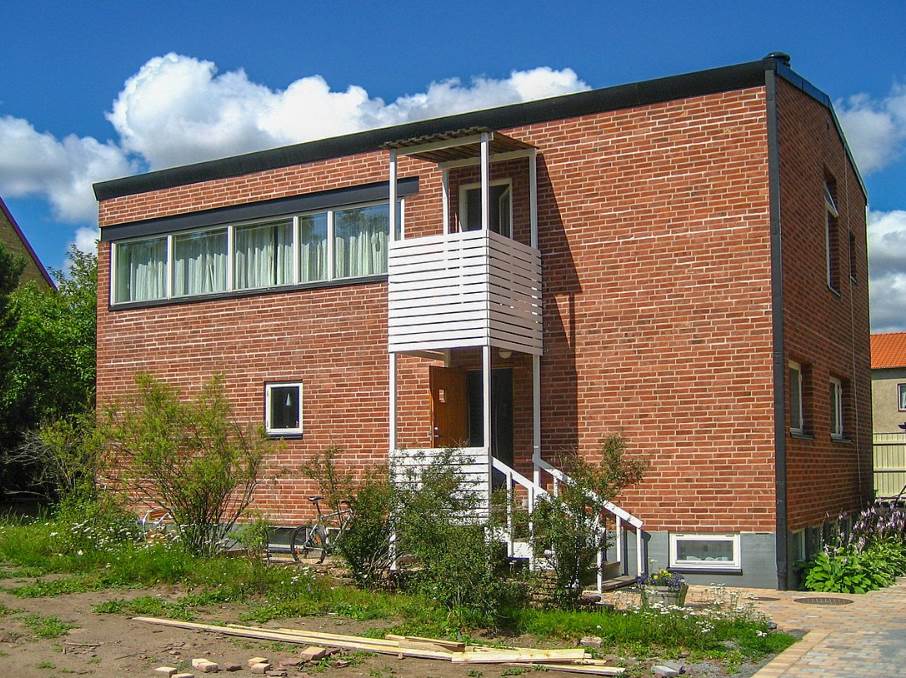
2. Robin Hood Gardens – London, United Kingdom
Robin Hood Gardens is a residential building in London located in Poplar, a neighborhood in the eastern part of the city. Canary Wharf, and all its amazing skyscrapers, is located just southwest of this Brutalist building that was completed in the year 1972.
The structure was designed by Alison and Peter Smithson, two Engish artists who are closely associated with the development of the Brutalist style. Despite the relevance of this building in architectural history, the west block was demolished in 2017 and the east block will follow soon. Parts of the demolished buildings are exhibited at the Victoria and Albert Museum in London.
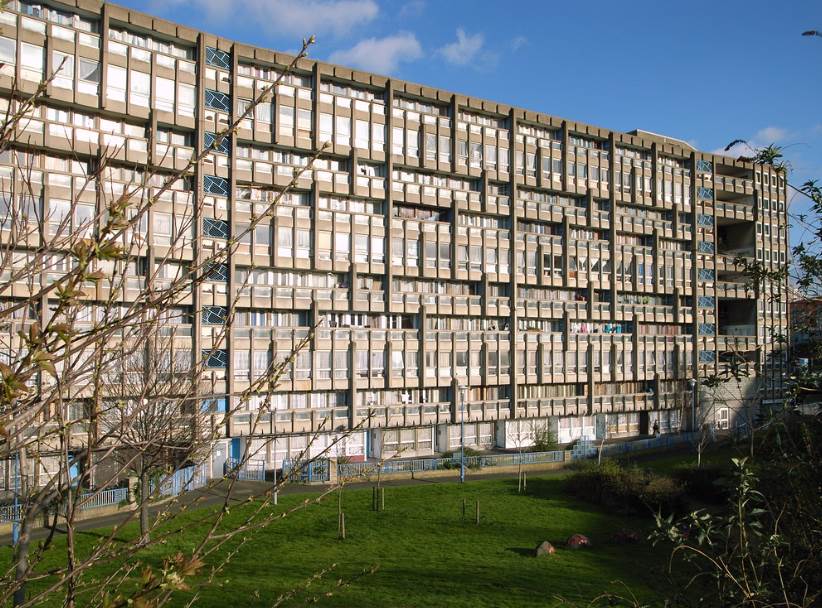
3. Geisel Library – San Diego, United States
Geisel Library is a magnificent library building on the campus of the University of San Diego in California. It was named after Audrey and Theodor Seuss Geisel. Theodor was an American children’s author better known by his nickname Dr. Seuss.
The building’s design is described as a mix of futurist and brutalist architecture and it has become one of the most iconic buildings in San Diego. It was completed between 1968 and 1970 and its design was intended to replicate hands holding up a pile of books.

4. Habitat 67 – Montreal, Canada
Habitat 67 or simply “Habitat” is another fascinating housing complex in the Brutalist architectural style. It’s located at Cité du Havre, a small man-made peninsula in Saint Lawrence River. This is situated in the Ville-Marie district in the heart of Montreal. Quebec, Canada.
The building was designed by Israeli-Canadian architect Moshe Safdie as part of his master’s thesis. It also served as one of the Expo 67, a World fair held in Montreal in 1967. The building features a stunning design that incorporates 354 identical concrete forms placed into various arrangements.

5. Trellick Tower – London, United Kingdom
Trellick Tower is a prime example of Brutalist architecture used to develop highrise residential blocks. It was completed in 1972 and is located in Kensal Green in the northwest of London. The building features 31 floors and stands 98 meters (322 feet) above the ground below.
The building was designed by the Hungarian architect Ernő Goldfinger (1902-197), one of the leading figures in modern architecture in the United Kingdom. He based the design of this tower on his previous Balfron Tower in East London, a slightly smaller tower with a similar design.
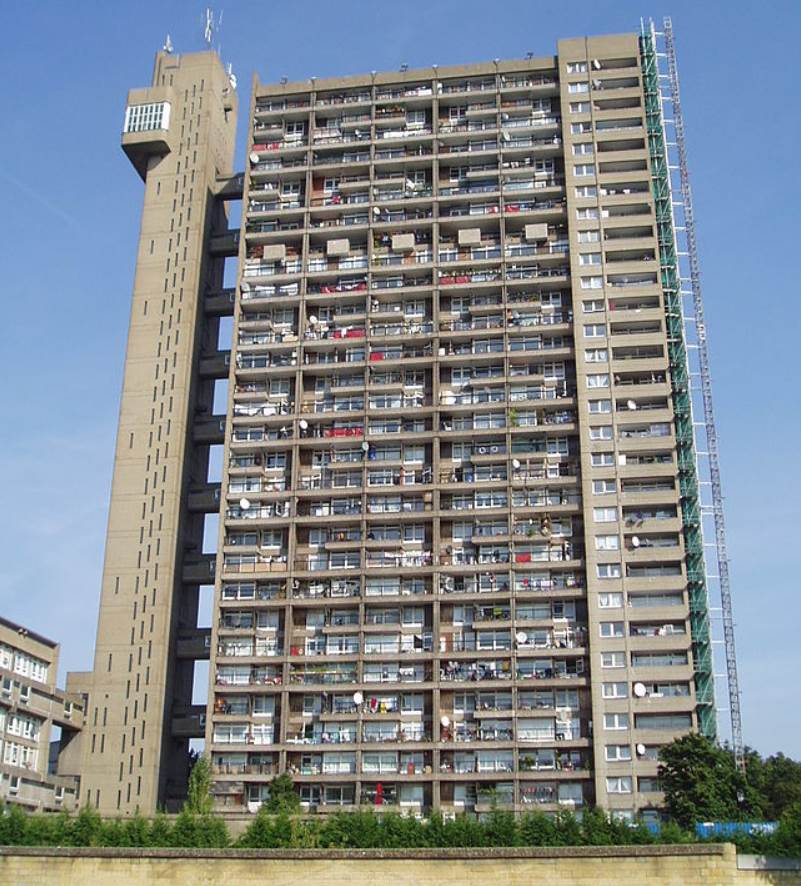
6. Velasca Tower – Milan, Italy
The Velasca Tower or “Torre Velasca” is one of the most remarkable buildings in Milan, the capital city of the Lombardy region in northern Italy. The tower is located just south of Milan Cathedral, a stunning Gothic cathedral that marks the historic heart of the city.
The tower was completed between 1956 and 1958 and stands 106 meters (348 feet) tall. It’s one of the first examples of Italian modern architecture and incorporates visible beams that appear to support the upper part of the building. The idea was to make it look like one of the numerous castles in Europe.

7. Genex Tower – Belgrade, Serbia
The Genex Tower is a skyscraper in Belgrade, the capital city of Serbia. It stands 154 meters (505 feet) above the ground below. It’s also known as the “Western City Gate,” a reference to the fact that it was constructed to serve as a monumental gate welcoming people arriving to the city from the west.
The most remarkable part of the skyscraper is that it’s interconnected by a skybridge at the top and features a fascinating tower in the middle. This looks similar to multiple similar free-standing observation towers all around the world. It features an observation deck and a revolving restaurant.
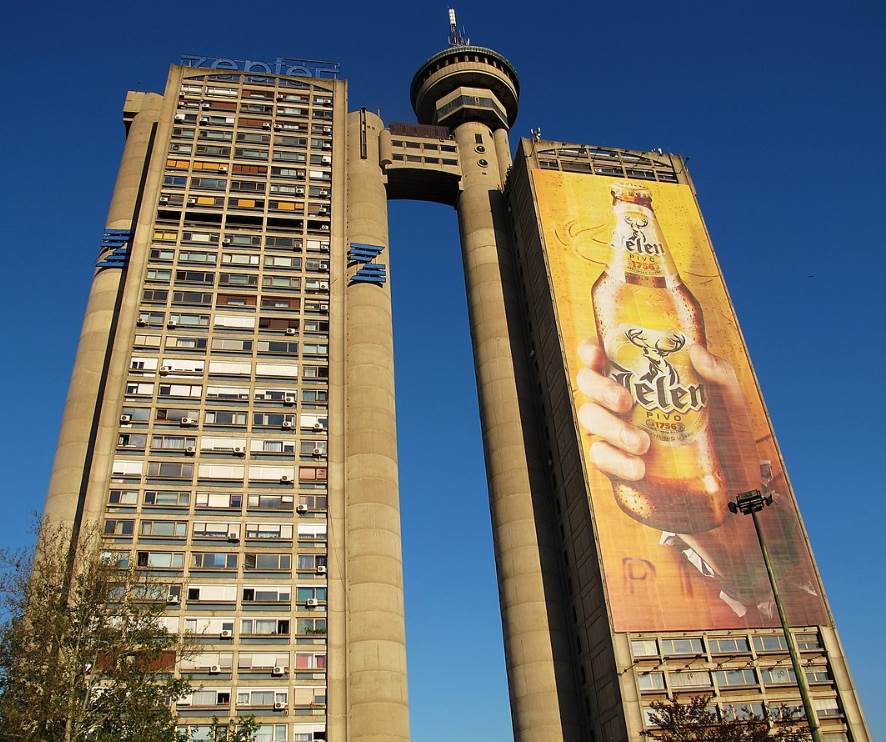
8. Robarts Library – Toronto, Canada
Robarts Library is the common name of a building officially known as “John P. Robarts Research Library.” It serves as the main social science and humanities library of the University of Toronto. It’s located on the campus of the university just northwest of Old Toronto, the historical heart of the city.
The library has often been described as one of the most prominent examples of Brutalist architecture in North America. It has a triangular design and each side has a length of approximately 100 meters (330 feet). The entire complex covers an area of 12,000 square meters (3 acres) and this building in Toronto houses over 4.5 million books and 4.84 million other items.
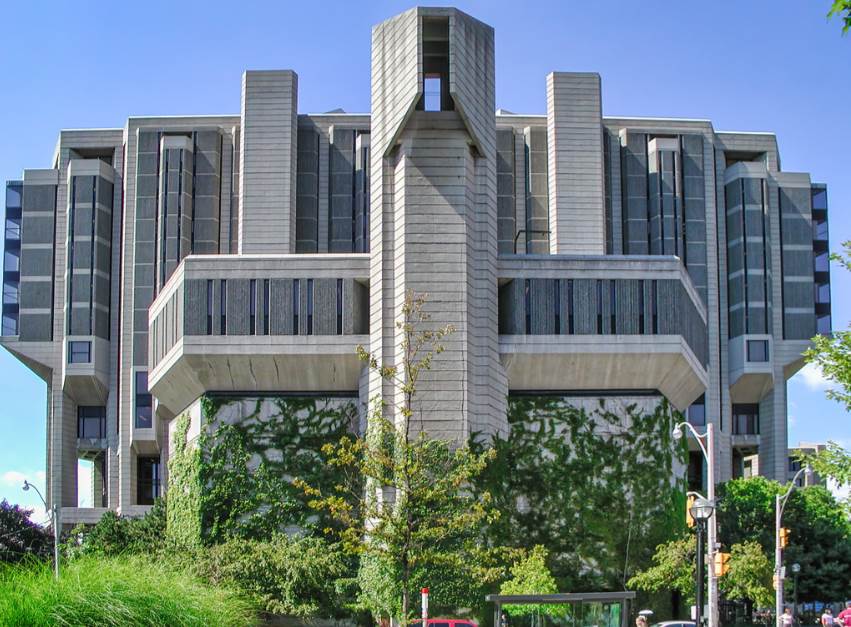
9. Boston City Hall – Boston, United States
Boston City Hall is the official seat of the government of Boston and houses the offices of the mayor of Boston and the Boston City Council. It was completed in 1968 and replaced Boston’s Old City Hall which was used for this purpose between 1865 and 1969.
Not everybody liked the design of this Brutalist building in Boston initially. Some media outlets even dubbed it “the world’s ugliest building” shortly after it was completed. Opinions were sharply divided as the New York Times write that “in this focal building Boston sought, and got excellence.”
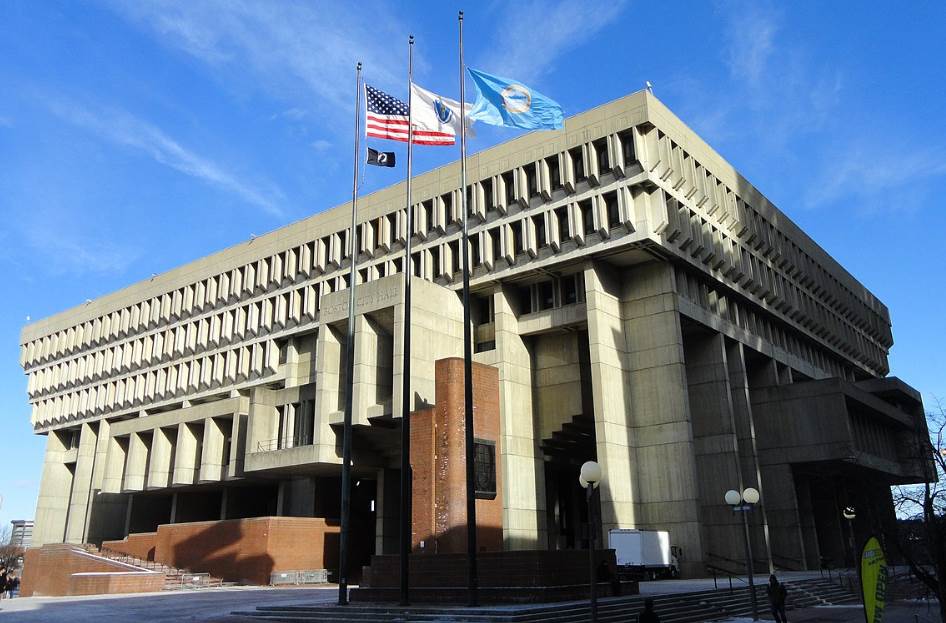
10. National Parliament House – Dhaka, Bangladesh
The National Parliament House or Jatiya Sangsad Bhaban is a building that emphasizes the fact that Brutalist architecture was really a worldwide architectural style. This remarkable Brutalist building houses the Parliament of Bangladesh and is located in Dhaka, the capital city of this Asian country.
The building was completed between 1961 and 1982 and has an incredible floor area of 810,000 square meters (200 acres). It was designed by Estonian-born American architect Louis Kahn (1901-1974) and can be described as one of his ultimate masterpieces. A documentary about Kahn titled “My Architect” (2003) goes into full detail about this incredible Brutalist building.



